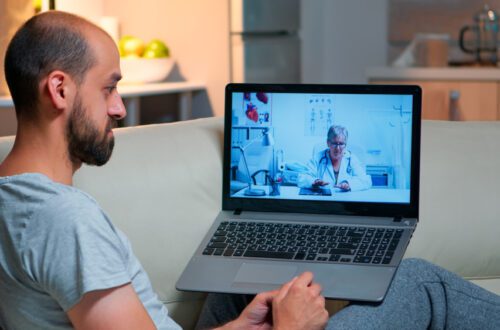Clinical trial participants do so for a variety of reasons. Some participate because other treatments for their health problem didn’t work; others do it to help future generations lead healthier lives. Most clinical trials compare two groups of people. One group gets the new treatment, and the other gets standard care. The groups are chosen by chance, which helps prevent bias.
What is a clinical trial?
Researchers test new treatments in a clinical trial. They may be a drug, device or procedure. Doctors usually conduct laboratory tests and animal studies to determine whether an intervention is safe and effective before testing it on people. Then they can move on to the next stage of the process: the clinical trial. The study design determines how the researchers will get the information they need from participants. Each test has a protocol that describes the study’s purpose, goals and methods. The researchers follow the protocol to ensure each participant’s safety and that the results will be reliable. Organizations such as universities, medical research foundations or pharmaceutical companies often sponsor clinical trials. However, a clinical trial can also be run by an independent group of doctors or even an individual researcher.
In order to make things as efficient and safe as possible, the organisers will often utilize advanced clinical trial management software like NovoPath 360. These programmes can streamline and enhance the entire research process, ensuring efficient data collection and analysis while maintaining the highest standards of participant safety. This is done by providing a high level of digital management and observation of all laboratory operations and putting it in one easily accessible program, allowing for the best communication and procedures in the laboratory. If you are considering running a trial yourself, such software is vital to have in place.
Everyone engaged must carefully consider their decision to participate in conducting clinical trials and studies. The researchers will explain the trial’s details and your participation in the informed consent process. The researchers will also ask you to sign a document that describes your rights and explains what will happen during and after the study. To ensure the researchers have enough volunteers to test their theories, they may need to restrict who can participate in the trial. These restrictions are called exclusion criteria. They are based on factors such as age, sex, specific types or stages of disease and previous treatment history.
Why do we need clinical trials?
Many of the life-saving medical treatments available today were tested through research studies. Research volunteers and pharma consulting fims are crucial in helping researchers develop and test new therapies for people with health problems. Before doctors can start testing a treatment in humans, they must prove that it’s safe and effective in laboratory animals. It is called “proof of concept.” Then, they must apply to the FDA for permission to begin clinical trials in humans.
To ensure that the results are due to the experimental treatment rather than other factors, such as natural recovery or other unrelated drugs or medicines, participants and study staff usually don’t know who is getting the real medication and who is getting a placebo. Occasionally, a trial may be monitored by a separate group of independent scientists known as a Data Safety Monitoring Committee (DSMC). The DSMC monitors all data from the clinical trial to ensure it is safe and properly reported. DSMCs also step in to stop or suspend a trial if they notice any worrisome patterns of serious side effects. The DSMC also checks that the trial is being conducted according to a set plan called the study protocol. It includes a schedule for how long the study will last and how results will be shared.
It’s important for those involved in research to stay updated on the latest developments in clinical trials. They can discover pharmaceutical market research at www.idrmedical.com, and other online resources, to learn about what’s going on when it comes to trials and cutting-edge medical treatments. Being informed about these developments is crucial for anyone interested in the world of clinical research and healthcare innovation, as it can provide valuable insights into the future of medical treatments and therapies.
What happens in a clinical trial?
The process of creating novel illness therapies must include clinical trials. They are carefully planned and monitored to ensure the safety of participants, collect data on how well the treatment works, and make any necessary changes. This information is then shared with medical professionals to improve patient care. The researchers that design and run a trial follow a set plan, called a protocol, to conduct the study. The researchers must follow the protocol exactly to produce consistent results. It helps prevent bias, which occurs when a researcher’s conscious or unconscious choices influence the study results. Prejudice can lead to false positive or negative outcomes, making the research unreliable.
Recruiting patients for a clinical trial is a crucial yet often lengthy process. It can take months or even years to enroll enough participants who meet the study’s criteria. However, with Clinical Trial Patient Engagement, researchers can streamline this process. By fostering strong communication, building trust, and actively involving potential participants, patient engagement helps improve recruitment efficiency, enhances retention, and ultimately leads to more successful trials. The recruitment process involves:
- Finding doctors who will agree to participate in the study.
- Advertising the trial.
- Placing flyers or posters where patients might see them.
- Personally approaching people in hospitals.
The study participants are then assigned to groups that receive different interventions. The groups are compared to see which one works best. Generally, the new treatment is compared to standard care, which may be as simple as changing the dosage of an existing medication or as complex as surgery or radiation therapy.
How do clinical trials work?
Clinical trials are arranged and run by research teams. Government agencies, universities, private companies or medical associations may sponsor them. Researchers set up the study according to a plan called a protocol. It describes how the trial will be done, including details about how participants will be screened and monitored. It also includes a description of the purpose of the study and what will happen to the results. A protocol must be approved by a research review board (IRB). In some trials, the researchers will try to keep the risks of participating as low as possible. They will often test a new treatment in small groups of people and will only move on to larger groups once they know the treatment is safe.
In some cases, the researchers will also give a placebo — a fake treatment with no active ingredients — to one group of participants. It will help them determine if the treatment is more effective or has any side effects that should be studied further. All participants must sign a form giving their informed consent to participate. Informed consent means that the researcher has told them all about the study, including its risks, and that the participant understands they can withdraw from the study at any time. The informed consent process is regulated by federal and state laws, as well as by the IRBs.






